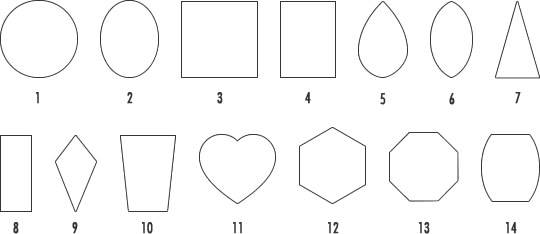Diamond Shapes
The captivating sparkle of a diamond is only amplified by its shape. Beyond the traditional round cut, a dazzling array of diamond shapes awaits you at Joseph Jewelry, your custom design jeweler in Seattle and Bellevue. This guide explores the mesmerizing world of diamond shapes, empowering you to discover the ideal match for your style and personality.
Shape: A Canvas for Personal Expression
Unlike the "Four C's" of diamond quality (cut, color, clarity, and carat weight), diamond shape is all about personal preference. It's a chance to express your unique style and create a truly captivating piece of jewelry.

-
Round
The most popular of all shapes, this cut has unparalleled brilliance. The way it refracts light makes a round diamond appear brighter than one of a different shape with similar clarity and color.
-
Oval
The oval cut is most similar to the round in terms of brilliance. Its elongated shape is universally flattering as it makes fingers look longer and more slender.
-
Square
Square diamonds are a relatively new. They are popular in solitaire designs or as a main stone flanked by smaller side stones. Square diamonds are particularly efficient stones in that they preserve roughly 60% of the original rough. Due to the unique way square diamonds are cut and polished, any inclusions they contain can be easily masked by a skilled craftsman.
-
Rectangle
Rectangles are very similar to square or "princess" cuts, but with a different length to width ratio. Like ovals, the elongated shape flatters the hand.
-
Pear
Also referred as "drop cut" or "tear drop" diamonds, pear shapes are known for their elegance. Pear diamonds combine the brilliance of a round stone with a unique shape that makes fingers appear more tapered.
-
Marquise
The story is that this classic shape dates back to France's King Louis XIV, who had it specially made to resemble the smile of his mistress, Marquise de Pompadour. This elongated boat cut is shaped to maximize carat weight, and can feature as many as 58 dazzling facets.
-
Triangle
Triangle cuts, otherwise known as trilliants, are most often used as side stones to flank a larger middle diamond, but for someone in search of a more unique engagement ring, they can make a stunning centerpiece all on their own. This fiery brilliant cut can have pointed or rounded edges and, in its preferred form, is equilateral (equal length on all sides).
-
Baguette
The baguette cut diamond resembles the French bread for which it was named – long and narrow, albeit more square at the ends than the actual baked goods. Originally used in costume jewelry popular in the Art Deco and Art Nouveau movements of the early 1900's, this stone's clean, geometric lines remain popular today. Baguettes generally come in smaller sizes, making them perfect for use as accent stones. Unlike rounded shapes, they can be set side by side with no gap, creating a gorgeous unbroken stretch of diamond that is truly breathtaking.
-
Kite
More often seen in necklace pendants and earrings, kite diamonds are great accent stones. They can also be combined into designs that would be far more expensive if they were made out of one large diamond. A star shape, for instance, can be made using five different kite shapes whose points meet in the middle.
-
Trapeze
Trapeze cut diamonds look like triangles with the points cut off. They are perfect for flanking center diamonds, and by cutting them in either a brilliant or step-cut style to match the stone they're accenting, they can create the illusion of one larger stone.
-
Heart
For obvious reasons, heart shaped diamonds are considered the most romantic. Generally cut with 59 triangular and kite shaped facets, heart shapes catch the light dramatically. This shape is also a great way for a cutter to hide a diamond's inclusions and the cleft at the top is perfect for excising a blemish without sacrificing carat weight.
-
Hexagon
This is a six-sided shape that can be brilliant or step-cut and features heavily as a center stone or in graduate shapes for multi-stone engagement rings.
-
Octagon
An octagon is similar to a hexagon, but with eight sides. An Asscher cut diamond, named after renowned diamond cutter Joseph Asscher, is a modified octagon that resembles a rectangle with its corner points squared off. This cut makes imperfections more visible so it is best to choose an octagon-shaped diamond with superior clarity.
-
Barrel
The unique shape of barrel cut diamonds make them ideal for pairing with other precious stones in multi-stone designs.